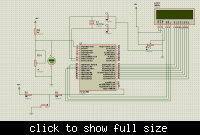danjorokanada
Newbie level 6
hi, i have some problem about ADC and LCD.. I am trying to display voltage on ADC on LCD display (in degree). I have not found any examples on how to do this.
How about if i have 10bit and the lcd port only 8bit.
I'm hoping someone can point me somewhere so I can try to understand this.
But the way, i use pic18f4580 and c-language..
Thanks for any help,
How about if i have 10bit and the lcd port only 8bit.
I'm hoping someone can point me somewhere so I can try to understand this.
But the way, i use pic18f4580 and c-language..
Thanks for any help,
